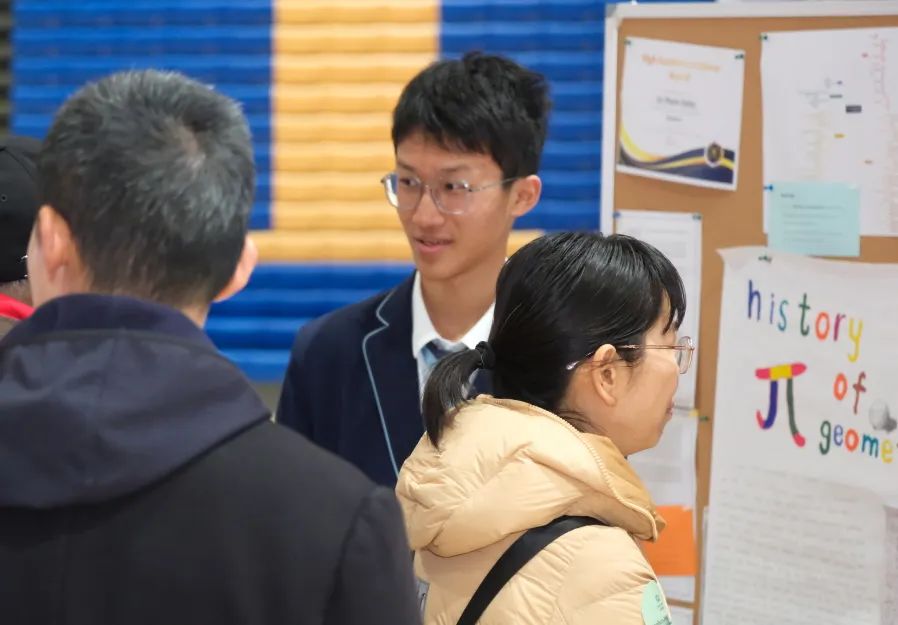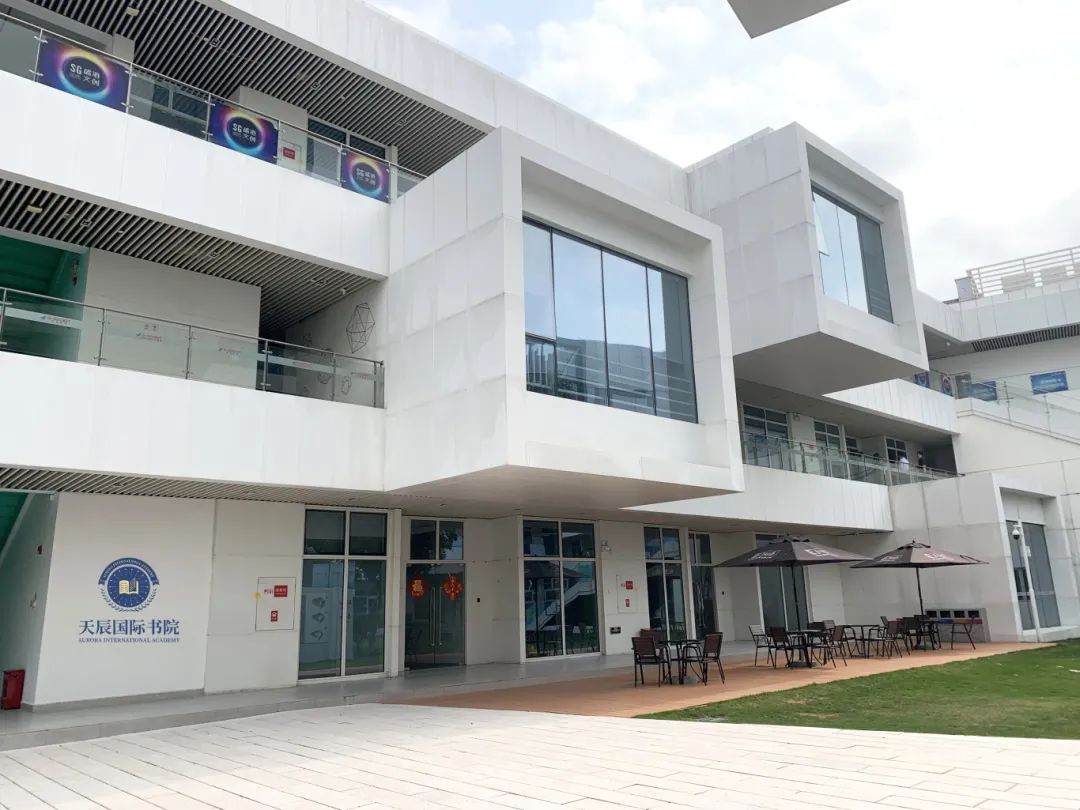Chemistry and ESS at ISNS | 化学与环境系统和社会学解析

“Chemistry is all about what our world is made of. It's about the different types of materials that make up not only our world but also the whole universe.”
At ISNS, we plan and teach science in a fun and engaging way to ensure that our students from G6 all the way to G12 are fostered their critical and creative thinking about research and design, as well as the identification of assumptions and alternative explanations. This week, we interviewed our High School Chemistry and Environmental Systems and Societies’ teacher Juliet Keister to learn more details about the two subjects.
When we start talking about chemistry to the 6th graders. Their understanding is basically the 3 states of matter: solid, liquid and gas.
And then each year they build more and more chemistry knowledge. For example, the 7th graders will learn about mixtures. They have some fun activities like making crystals and investigating all about solutions.
In grade 8, we introduce the periodic table, which are all of the different known elements of the universe.
By grade 9 students are able to learn more about elements, molecules and compounds. It is very practical and hands on. We do a lot of different labs. It really combines the practical skills with the theoretical knowledge.
Then in grade ten, there are still practical but it's more knowledge based. Students are going to talk about what nuclear chemistry is, how scientists use chemistry to generate energy. They do experiments using calculations to predict what they expect to see and then compare their calculations to what they actually get in the laboratory.
All of this is to prepare them if they choose chemistry as their DP subject. In DP chemistry, students would be learning even more content and they will have the opportunity to do their IA which is internal assessment.
Environmental Systems and Societies in DP
Environmental systems and societies is a really good interdisciplinary course. Students can take it to fulfill their INS credit or their science credit. It's actually a hybrid. It brings together sciences of the natural world with focus on ecology and some chemistry, married together with what humans are doing, why they are doing it, what the causes are and any effects. We do look at a lot of global problems but it's very solutions focused.
“When I teach, I really try to promote what we can do about it, what people are doing now and what you could do. It is a highly relevant course. It takes the systems approach looking at things in the big picture. “
If a student is really invested in science, then they might take this as their Individual and Society (I&S) credit. If they are using it for their science credit, they have to have a different I&S. They can't get both.
In grade 9 and 10 we have it set up, where students are exposed to content from each of the four different DP classes.
By the end of grade ten, students should know which one they really want to dig into deeper, then transitioning into DP. There is a greater focus in DP on test taking skills: how to do well on a written assessment. We are focusing on how you succeed on a test and also enjoying doing experiments. It is really pushing the student's conceptual understanding to the next level.
For example, in grade 9 we focus on their collaboration skills in a chemistry project. Students collaborate on is a unit about soil chemistry. They will be given their dependent variable and the tool to measure the dependent variable but they have to discuss with their partner what they want their independent variable to be, which also requires creative thinking. This experiment is different than other ones they've done, because every group has a different independent variable. The variables will lead to different outcomes. It's good for the students to realize when you do a real experiment, you actually don't know what's going to happen. It is about agency. The grade 9 and 10 students are old enough to learn no matter what happens, as long as you learn something it's a success.
Chemistry summative assessments
Chemistry has summative assessments throughout MYP and DP. Students need to do at least one strand of each criterion instead of always doing full criteria. For example, the lab that we just did with my 10th graders. Students are given the background information and the research question and procedures. For criterion B, they just had to write their own hypothesis and do calculations and then proceed. They will only be assessing the evaluation not on a graph. In that way, they are able to practice each type of skill in each unit and they will complete each strand twice throughout the year, but no pressure on doing a full ABC and D in every unit.

“ Tips for learning chemistry
“Whenever you feel lost, remember the most important difference between one type of thing and any other type of thing is the number of protons in the nucleus of the atom. The other advice that I always give is remember to take breaks. If you feel confused or overwhelmed, you should either ask for help or just take a break and try again later.”
--Juliet Kiester
MYP Chemistry and Environmental Systems and Societies’ teacher
“化学是关系到我们的世界是由什么构成的。它是关于不同类型的元素,这些元素不仅构成了我们的世界,也构成了整个宇宙。”
在ISNS,我们以有趣和引人入胜的方式规划和教授科学,以确保从G6到G12的学生都能培养他们对研究和设计的批判性和创造性思维,以及假设和替代解释的识别。本周,我们采访了我们高中的化学与环境系统和社会教师Juliet Keister,深入的了解更多关于这两门学科的内容。
当我们开始向六年级学生提到化学时。他们的理解基本上是物质的三种状态:固体、液体和气体。然后每年会积累越来越多的化学知识。
例如,七年级学生会学习混合物。同学们会有一些有趣的活动,例如制作晶体和研究所有有关解决方案的方法。在八年级,我们介绍了元素周期表,学习宇宙中所有不同的已知元素。
到九年级时,学生能够更多地了解元素、分子和化合物。我们的学习单元非常实用且易于实践。我们会做很多不同的实验,将实践技能与理论知识结合起来。
然后在十年级,仍然有实践,但更多的是基于知识积累。学生们将讨论什么是核化学,以及科学家如何使用化学来产生能量。他们通过计算来进行实验,以预测他们期望看到的结果,然后将计算的结果与在实验室中实际得到的结果进行比较。
如果学生们选择化学作为他们的DP科目,所有这些都是为了让他们做好准备。在DP化学中,学生将学习更多内容,他们将有机会进行内部评估。
环境系统和社会是一门非常好的跨学科课程。学生可以用它来完成他们的个人与社会(I&S)学分或科学学分,它实际上是一个混合体。它汇集了自然界的科学,重点是生态学和化学,结合了人类正在做的事情、他们为什么这样做、原因是什么以及造成的影响等等。我们会关注很多全球性问题,但同时也非常注重解决方案。
”当我教授这门课时,我会去主张学生们思考我们可以为此做些什么,人们正在做什么以及你个人可以做什么。这是一门高度和现实相关的课程。它采用系统方法,从大局着眼”。
修大学预科学分,如果学生真的对科学感兴趣,那么他们可能会将其作为个人和社会学分。如果他们将其用于科学学分,则他们必须选择其他的个人和社会课。你不能用一门课, 修两者兼得的学分。
在九年级和十年级,我们为学生设计的内容,可以接触到所有四门DP科学课程。
到十年级结束时,学生们应该知道他们真正想深入研究哪一个,然后过渡到DP。DP更加关注应试技巧:如何在书面评估中取得好成绩。我们专注于帮助学生在测试中取得成功,同时享受做实验的乐趣,这样确实将学生的概念理解推向了一个新的水平。
例如,在九年级时,我们会重点培养他们在化学项目中的协作技能。其中一个学生协作的单元是土壤化学。我给他们因变量和工具测量因变量,他们需要与小组讨论他们希望自变量是什么,这也需要创造性思维。这个实验与他们做过的其他实验不同,因为每个组都有不同的自变量。变量会导致不同的结果。在做真正的实验时,让学生意识到你实际上并不知道会发生什么,这是有益处的,因为这是能动性学习的体现。对于九年级和十年级的学生来说,不管实验结果如何,只要你学到了东西就是成功的。
化学在整个MYP和DP中都有总结性评估。学生需要至少完成每个评估的一部分标准,而不需要总是完成所有的。例如,我刚刚与十年级学生一起做的实验。学生们可以根据提供的背景信息以及研究问题和步骤。对于评估标准B,他们只需编写自己的假设并进行计算,然后再继续完成这个单元。只有这个部分会被评估,他们不需要绘制图表。通过这种方式,他们能够在每个单元中练习每种类型的技能,并且他们将在一年中完成每个标准两次,而不需要每个单元都完成完整的四个标准ABC和D。

“当你学习遇到疑惑时,记住,一种物质与任何其他物质之间最重要的区别是原子核中的质子数不同。我经常给出的另一个建议是注意适时休息。如果你感到困惑或压力过大,可以寻求帮助或休息一下,调整好再来。”
--Juliet Kiester
MYP化学与DP环境系统与社会学老师

声明:本文内容为国际教育号作者发布,不代表国际教育网的观点和立场,本平台仅提供信息存储服务。
免费联系ISNS深圳市南山外籍人员子女学校
每天限50个名额
课程设置:IB课程,加拿大课程
学费区间:20-25万
课程设置:Alevel课程,英国课程,IGCSE课程
学费区间:10.8万






